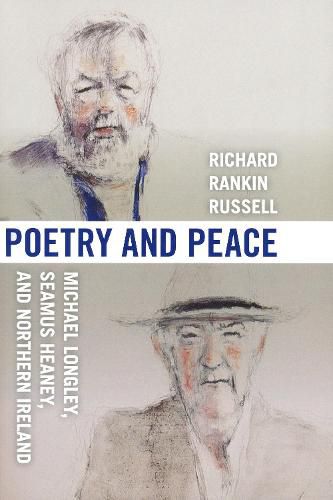Readings Newsletter
Become a Readings Member to make your shopping experience even easier.
Sign in or sign up for free!
You’re not far away from qualifying for FREE standard shipping within Australia
You’ve qualified for FREE standard shipping within Australia
The cart is loading…






Michael Longley and Seamus Heaney’s lives and careers have been intertwined since the 1960s, when they participated in the Belfast Group of creative writers and later edited the literary journal Northern Review. In Poetry and Peace: Michael Longley, Seamus Heaney, and Northern Ireland, Richard Rankin Russell explores Longley’s and Heaney’s poetic fidelity to the imagination in the midst of the war in Northern Ireland and their creation, through poetry, of a powerful cultural and sacred space. This space, Russell argues, has contributed to cultural and religious dialogue and thus helped enable reconciliation after the years of the Troubles.
The first chapter examines the influence of the Belfast Group on Longley and Heaney’s shared aesthetic of poetry. Successive chapters analyze major works by both poets. Russell offers close readings of poems in the context of the poets’ cultural and political concerns for the province. He concludes by showing how thoroughly their poetic language has entered the cultural, educational, and political discourse of contemporary Northern Ireland as it pursues the process of peace.
$9.00 standard shipping within Australia
FREE standard shipping within Australia for orders over $100.00
Express & International shipping calculated at checkout
Michael Longley and Seamus Heaney’s lives and careers have been intertwined since the 1960s, when they participated in the Belfast Group of creative writers and later edited the literary journal Northern Review. In Poetry and Peace: Michael Longley, Seamus Heaney, and Northern Ireland, Richard Rankin Russell explores Longley’s and Heaney’s poetic fidelity to the imagination in the midst of the war in Northern Ireland and their creation, through poetry, of a powerful cultural and sacred space. This space, Russell argues, has contributed to cultural and religious dialogue and thus helped enable reconciliation after the years of the Troubles.
The first chapter examines the influence of the Belfast Group on Longley and Heaney’s shared aesthetic of poetry. Successive chapters analyze major works by both poets. Russell offers close readings of poems in the context of the poets’ cultural and political concerns for the province. He concludes by showing how thoroughly their poetic language has entered the cultural, educational, and political discourse of contemporary Northern Ireland as it pursues the process of peace.